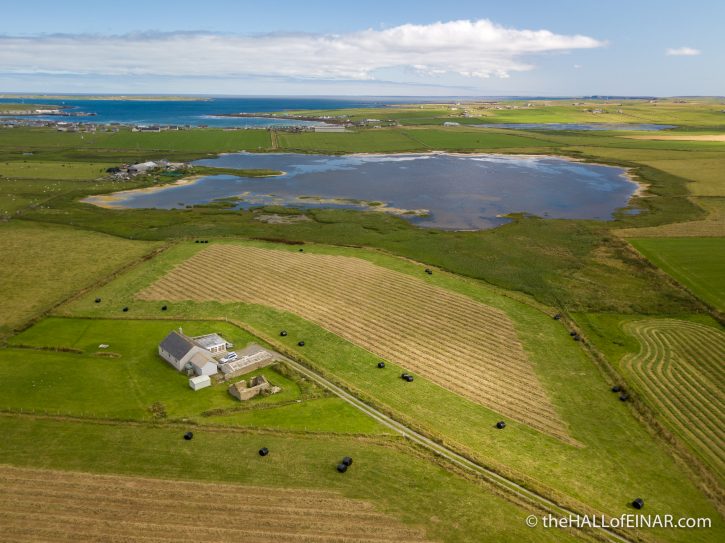What was this artificial island used for?
There are several large lochs on Westray. Naturally they’re in depressions in the landscape. The Loch of Burness is in a natural hollow, one of the few places from which it isn’t possible to see the sea.

There’s an odd feature in the Loch. Look at the outline of it and you’ll see a prominent peninsula.
Here’s the farm of Burness and what appears to be an artificial ‘island’ in the Loch joined by a causeway:

It’s the sort of thing which our Neolithic ancestors made 5,000 to 6,000 years ago by driving timber piles into the beds of a lochs before filling them in with stone to make solid foundations. They’re called crannogs in Scotland, which translates from Gaelic as son of tree or young tree, because their foundations were of wood.
Tradition on Westray says that the peninsula is the site of Picts’ houses:

I particularly like the use of the word plantycrub here. They mean plantiecrub, which is a stone-walled enclosure for growing vegetables.
Whoever built the artificial island originally, it must have been, literally, a monumental effort. We can only guess what it might have been used for. Archaeologists have guessed that the Scottish crannogs might have been high status dwellings (elegant lakeside dwelling house), trading posts (a glitzy shop), have a spiritual purpose (a church) or cosmological sites (star observatories). Personally they’re where I would put an infectious disease hospital or a romantic venue for a wedding.
What do you think this one might have been used for?